Page
1
2
3
4
5
6
7
8
9
10
11
12
13
14
15
16
17
18
19
20
21
22
Tuesday, 28 September. Following
the generous buffet breakfast, the group was led on a 9:30 walking tour of
Blois. The day was cool and overcast with a slight mist that eventually
dissipated. Our local guide was a Norwegian woman who had lived 41 years in
France. In warning us to watch where we stepped, she made much of the fact there
are more dogs in France (5 million) than people in Norway (4.5
million).
She led us up the narrow lanes to the Hotel Sardini (1510), one
of the oldest surviving buildings in Blois. We stopped at a couple of other old
houses along the same street (Rue du Puits Chatel). At one house, a woman let
use take pictures through the window.

Lane below cathedral |
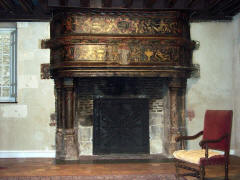
Fireplace in old house |
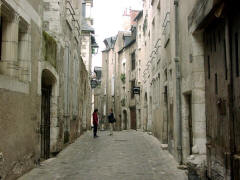
Rue du Puits
Chatel |

Stairs in old house |
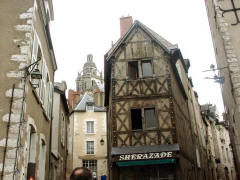
Old timbered building,
Cathedral
above |
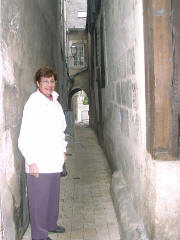
Jane in narrow
lane |
Continuing through the town, we came to the Chateau
de Blois. We arrived just in time to see the noontime performance of three
roaring dragons swaying from the windows of a building just across from the
entrance.

The Chateau of Blois - Francis
I wing |
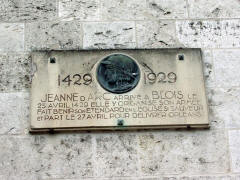
Joan of Arc plaque |

Three dragons looking for
tourists to eat |
We were surprised to learn that Blois, and
especially the Chateau, had such a rich history. Joan of Arc stopped here in
1429 on her way to lift the siege of Orleans. Also, the Chateau was once a royal
residence and the political capital of France.
King Louis XII moved here about 1498 and added a
major wing to the 13th century Gothic chateau, introducing flamboyant
Renaissance elements. When Francis I succeeded him in 1515, he began construction
of a wing in French Renaissance style, intending to move to Blois from the Royal
Chateau at Amboise. However, after the death of his wife in 1524, he lost
interest in Blois. Henry III lived at Blois for a time after he was driven from
Paris during the French Wars of Religion. Following his assassination in 1589,
the chateau was occupied by King Henry IV, the first Bourbon monarch. In 1598 he
moved the royal residence to Paris. Then his widow, Marie de Medici, was exiled
to the Blois Chateau for a time (1617-1619) by her son, Louis XIII. The final
wing was added by Gastone d'Orlean in 1635 after his brother, Louis XIII, gave
him the chateau as a wedding gift.
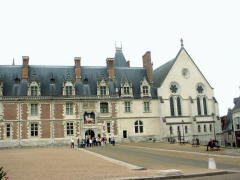
Louis XII wing (L); 13 Century wing (R) |
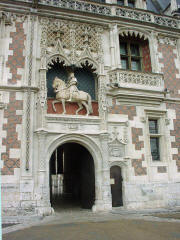
Entrance to Chateau |
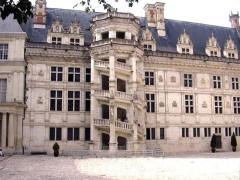
Francis I
staircase |
By the mid-17th century, the chateau had been
abandoned and, at one point, was scheduled to be demolished. Instead, it was
turned over to the Army, which significantly altered the interior. Finally, in
1841King Louis Philippe had the Chateau classified as a historic monument. It
was subsequently restored and turned into a museum.

Louis XII wing from
courtyard |
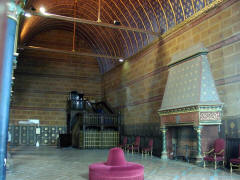
Hall of the Estates General (13
century) |
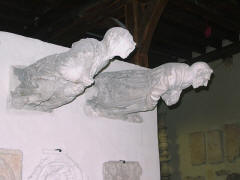
Gargoyles in Lapidary Museum |
The tour of the Chateau was very interesting, both
for the rooms and for the history. From an outdoor vantage point of the Chateau,
we had a great view of St. Nicolas Church, Vieux Blois, and the Loire River.
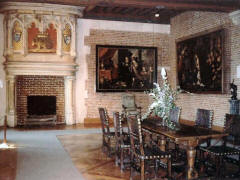
Restored room |
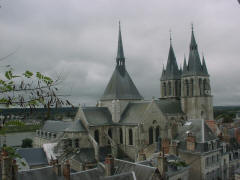
St. Nicolas, Vieux Blois, and
the Loire River |

Harpsicord |
Home
Copyright © 2000-2023 DarrellPeck.com All rights
reserved.





